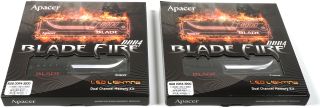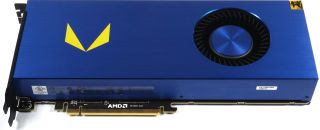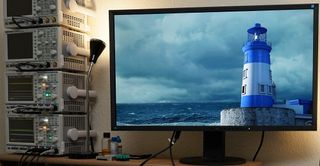Building A Workstation With Ryzen Threadripper And Radeon Vega Frontier Edition
Introduction & Components
Professionals who make money with their workstations need every bit of performance they can get. Overclocking, which often compromises long-term stability for a bit of extra speed, generally isn't an option. So, those folks need the fastest hardware available and it has to be more reliable than the average desktop. No wonder workstation components are so expensive! But when onerous price tags become a problem, it's sometimes acceptable to substitute prosumer hardware instead. Think high-end Core i9 processors and Nvidia Titan X or AMD Radeon Vega Frontier Edition graphics cards.

With last year's introduction of the AMD Ryzen Threadripper 1950X CPU, there's one more platform option for enthusiasts completing high-end tasks. It's relatively affordable, massively parallel thanks to a 16-core design, loaded with connectivity for add-in cards, and able to accommodate lots of memory. That makes Threadripper 1950X the perfect foundation for a value-oriented workstation build. And after we're done piecing this monster together, we'll use it for testing next-gen professional graphics cards.
Also included in the Tom's Hardware reference workstation is an ASRock X399-based motherboard, 32GB of DDR4 memory, AMD's aforementioned Radeon Vega Frontier Edition, a big Cooler Master Cosmos C700P case, and an Eizo EV3237-BK 4K monitor. Together, they give us plenty of performance, slots, and ports for a fast, stable PC adept at running professional software.
Motherboard And Memory
AMD's Ryzen Threadripper family utilizes a different processor socket than the company's mainstream Ryzen CPUs, which drop into the Socket AM4 interface. Rather, the more sophisticated Threadripper chips employ Socket TR4. And that means a new chipset to communicate with the processors, along with adding storage, USB, audio, and networking connectivity: X399.
ASRock's X399 Taichi offers us a good mix of moderate pricing (for a prosumer motherboard) and advanced functionality. It is not the most colorful, eye-catching, or well-equipped X399 board on the market. However, it's one of the most sensible for enthusiasts trying to keep the cost of their workstation manageable. Even under continuous load, the voltage regulation circuitry remains cool enough. And the absence of active cooling on the chipset's heat sink helps minimize noise.


As for memory, we used a total of 32GB DDR4 from two dual-channel Apacer Blade Fire kits. In this configuration, we're able to run the memory at 3200 MT/s after applying all of ASRock's BIOS updates. Trying to populate the remaining four memory slots necessitates a step down to 2866 MT/s, forcing you to choose between maximum capacity and optimal bandwidth. We ultimately went with the 32GB configuration because few of the applications we benchmark would have benefited from more RAM.
Readers in the U.S. may want to consider another brand instead, since Apacer isn't widely available domestically. We had good luck with G.Skill's Ripjaws V DDR4-3200 kit in our launch review, so a couple of 16GB kits would be a good alternative.
Stay on the Cutting Edge
Join the experts who read Tom's Hardware for the inside track on enthusiast PC tech news — and have for over 25 years. We'll send breaking news and in-depth reviews of CPUs, GPUs, AI, maker hardware and more straight to your inbox.

We could have gone more extreme with our storage, but again, most of our benchmarks stress the host processor and graphics card. For now, a pair of 1TB Crucial MX300 SSDs and a WD Red 4TB are enough.
Graphics
AMD's Radeon Vega Frontier Edition lives between two worlds, serving professionals and gamers at the same time. Whereas Nvidia's competing Titan Xp does not support the company's certified Quadro drivers, which would optimize it for applications like AutoCAD, 3ds Max, Maya, SolidWorks, etc., AMD enables the Frontier Edition card with its Radeon Pro Software drivers.
This is a critical differentiator for professionals. In some cases, workstation-class software won't even start without certified graphics drivers installed. By building this system with a Radeon Vega Frontier Edition, we're able to use a lot of applications at a much higher performance level than we'd get buying a Quadro for the same price.

Case And Power Supply
A powerful workstation calls for a case with an equally commanding presence. Since we have to move this machine from time to time, depending on whether we're testing performance, acoustics, or thermals, we chose Cooler Master's handy Cosmos C700P. On one hand, this case allows us to swap hardware for our tests quickly and easily thanks to its hinged side walls. On the other, we're positively surprised by its torsional rigidity. Good build quality and an attractive aesthetic add to the Cosmos' appeal.


The Cooler Master V850 does everything we need as well. It's based on Seasonic's mature KM3 platform, offers fully modular cabling, and sports stable voltage output.


Configured the way we have it now, our workstation requires a maximum of 600W during the most taxing stress tests we run. That leaves a bit of headroom before maxing out the V850's peak output. In a workstation environment, this is certainly desirable.

Monitor
Of no consequence to performance, but still critical to a great workstation experience, we went with an Eizo EV3237-BK display. The 32-inch IPS panel offers a native resolution of 3840x2160, along with the color space needed for CAD/CAM work. If your application is more color-sensitive, Eizo's ColorEdge line-up may be more appropriate.

| Reference System | |
| Processor | Ryzen Threadripper 1950X |
| Motherboard | X399 Taichi |
| Memory | 32GB Apacer Fire Blade DDR4-3200 (4x 8GB) |
| Graphics | AMD Radeon Vega Frontier Edition 16GB |
| Hard Drive | Western Digital Red 4TB |
| SSDs | 2x MX300 SSD 1050GB |
| Case | Cooler Master Cosmos C700P |
| Cooling | Floe Riing 360 |
| Power Supply | Cooler Master V850 |
| Monitor | Eizo EV3237-BK |
| OS | Windows 10 Pro 64-bit |
| Drivers | Radeon Pro Software |
MORE: Best PC Builds
MORE: How To Build A PC
MORE: All PC Builds Content
-
bit_user It'd be nice to see some task benchmarked where Vega's HBCC really gets a workout. Can you ask AMD for examples of this?Reply
BTW, you'd probably need more system memory, since HBCC is useful when accessing significantly more data than the GPU's 16 GB of RAM can hold. -
cangelini Bit, this is something I tried to get out of AMD when Vega launched, and they didn't have any solid examples yet of where the 8GB card would demonstrate an advantage. Next time I'm on the line with them, I'll see if this situation has changed.Reply -
bit_user Reply
Thanks, Chris.20997976 said:Bit, this is something I tried to get out of AMD when Vega launched, and they didn't have any solid examples yet of where the 8GB card would demonstrate an advantage. Next time I'm on the line with them, I'll see if this situation has changed.
Back at launch, this was basically new functionality, for a GPU. A year on, 3rd party software developers will have hopefully have had time to start making use of the feature.
@kytokid vents considerable angst about GPU memory vs. scene size, in 3D rendering software. I'd imagine that was one of AMD's target applications, with this feature. -
bit_user Reply
Because of system memory size?21001052 said:...if you are working with Iray of Octane, totally worthless..
What would you need to change about the build, to make it more useful? -
petersutton213 "If you're looking to replace Cooler Master's stock case fans with your own, be warned: the enclosure's mounting holes don't line up well with aftermarket 120mm fans. Even the screws bundled with Cooler Master's own MasterFan Pro won't work" And the raidiator length for this case can be an issue............ And yet it's the case you recommend?Reply